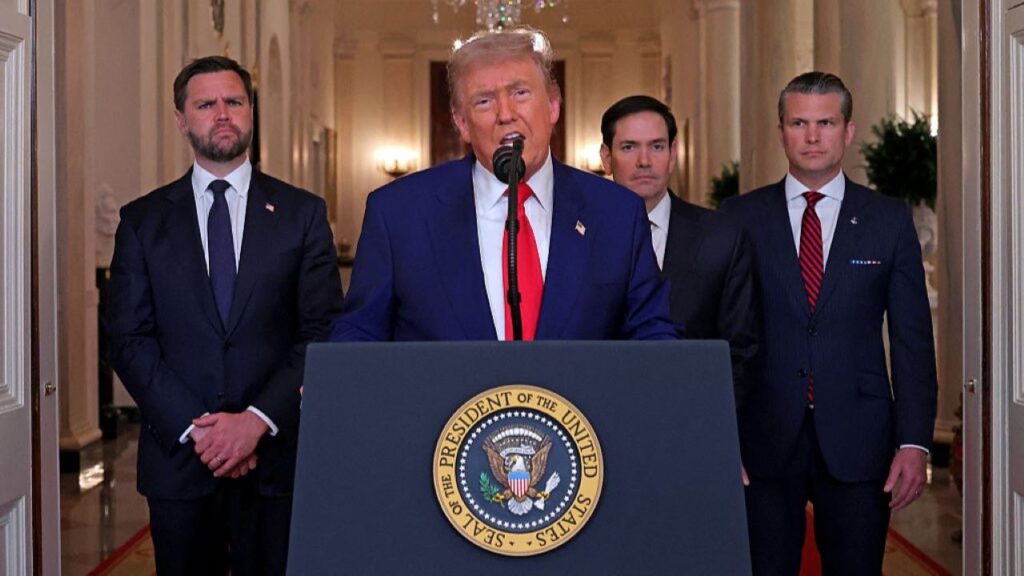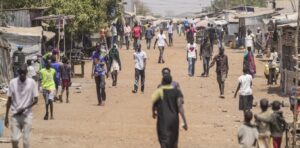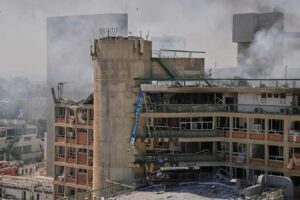
Explosions reverberated over Doha, Qatar, on Monday as intelligence reports warned of an imminent Iranian attack on U.S. military installations in the region. The Al Udeid Air Base, America’s largest military facility in the Middle East, was the primary target of this aggression.
A senior White House official confirmed that both the White House and the Pentagon were closely monitoring the situation. Joint Chiefs Chair Gen. Dan Caine and Defense Secretary Pete Hegseth were in the Situation Room, overseeing potential Iranian retaliation when news of the explosions emerged.
Qatar’s foreign ministry swiftly condemned the attack, emphasizing that there were no casualties. “The State of Qatar strongly condemns the attack that targeted Al-Udeid Air Base by the Iranian Revolutionary Guard. We consider this a flagrant violation of the sovereignty of the State of Qatar, its airspace, international law, and the United Nations Charter,” stated the ministry.
Qatar’s Defensive Response
Qatar’s air defenses reportedly intercepted the Iranian missiles, averting potential disaster. The foreign ministry reassured that a detailed account of the attack’s circumstances would be forthcoming from the Ministry of Defense, while also asserting their right to respond to Iran’s aggression.
The Iranian strike, involving at least six missiles, coincided with Qatar’s announcement of its airspace closure on Monday. This move followed top Iranian officials’ vows of retribution for President Donald Trump’s recent strike on Iran’s nuclear facilities.
Operation Fatah’s Blessing
Iranian state media heralded the military response as “Operation Fatah’s Blessing.” The announcement was made on state television, accompanied by martial music, with a caption declaring it “a mighty and successful response by the armed forces of Iran to America’s aggression.”
This development comes in the wake of heightened tensions between the U.S. and Iran, following the U.S. administration’s aggressive stance on Iran’s nuclear ambitions. The geopolitical landscape of the Middle East remains volatile, with both nations engaging in a high-stakes game of brinkmanship.
Historical Context and Expert Opinions
The conflict between the U.S. and Iran has deep historical roots, tracing back to the 1979 Iranian Revolution and the subsequent U.S. embassy hostage crisis. Over the decades, relations have been fraught with tension, marked by economic sanctions, military confrontations, and diplomatic standoffs.
Dr. Sarah Al-Mahdi, a Middle East policy expert, noted, “This latest incident underscores the fragile nature of the region’s security dynamics. Both sides are aware of the catastrophic consequences of a full-scale conflict, yet they continue to engage in provocative actions.”
According to a 2022 report by the International Crisis Group, the Middle East remains one of the world’s most militarized regions, with numerous state and non-state actors vying for influence. The report highlights the need for diplomatic engagement to prevent further escalation.
Implications and Future Outlook
The interception of Iranian missiles over Qatar signals a critical juncture in U.S.-Iran relations. The international community watches closely, concerned about the potential for a broader conflict that could destabilize the region.
As Qatar prepares to release a comprehensive statement on the incident, the global diplomatic community urges restraint and dialogue. The United Nations has called for an emergency session to address the growing tensions and explore avenues for peaceful resolution.
Meanwhile, the U.S. administration remains steadfast in its commitment to protecting its assets and allies in the Middle East. The Pentagon has reiterated its readiness to respond decisively to any further threats.
The coming days will be crucial in determining the trajectory of this conflict. Both nations face the challenge of navigating a complex geopolitical landscape, with the potential for significant ramifications on global security and economic stability.






